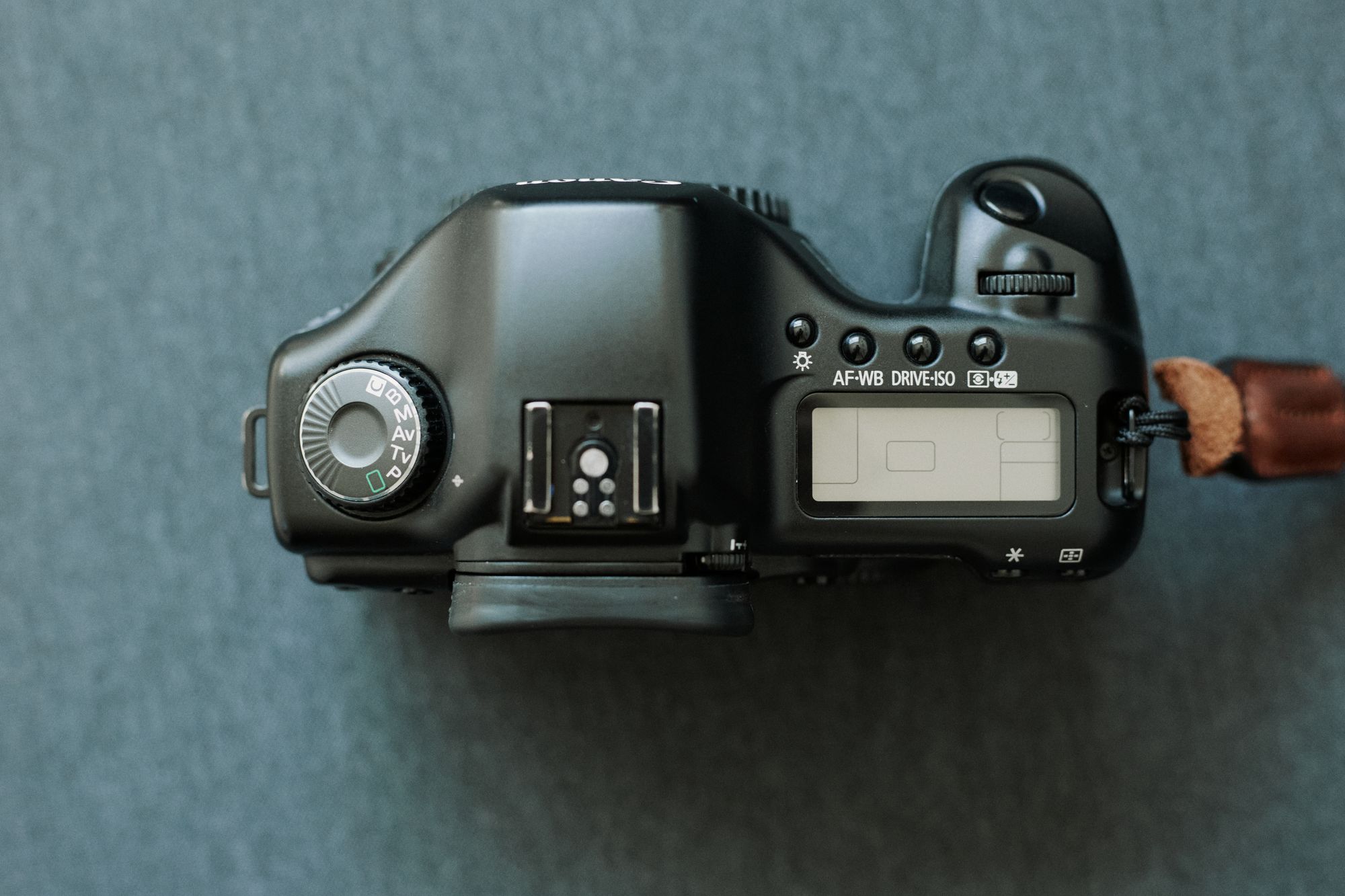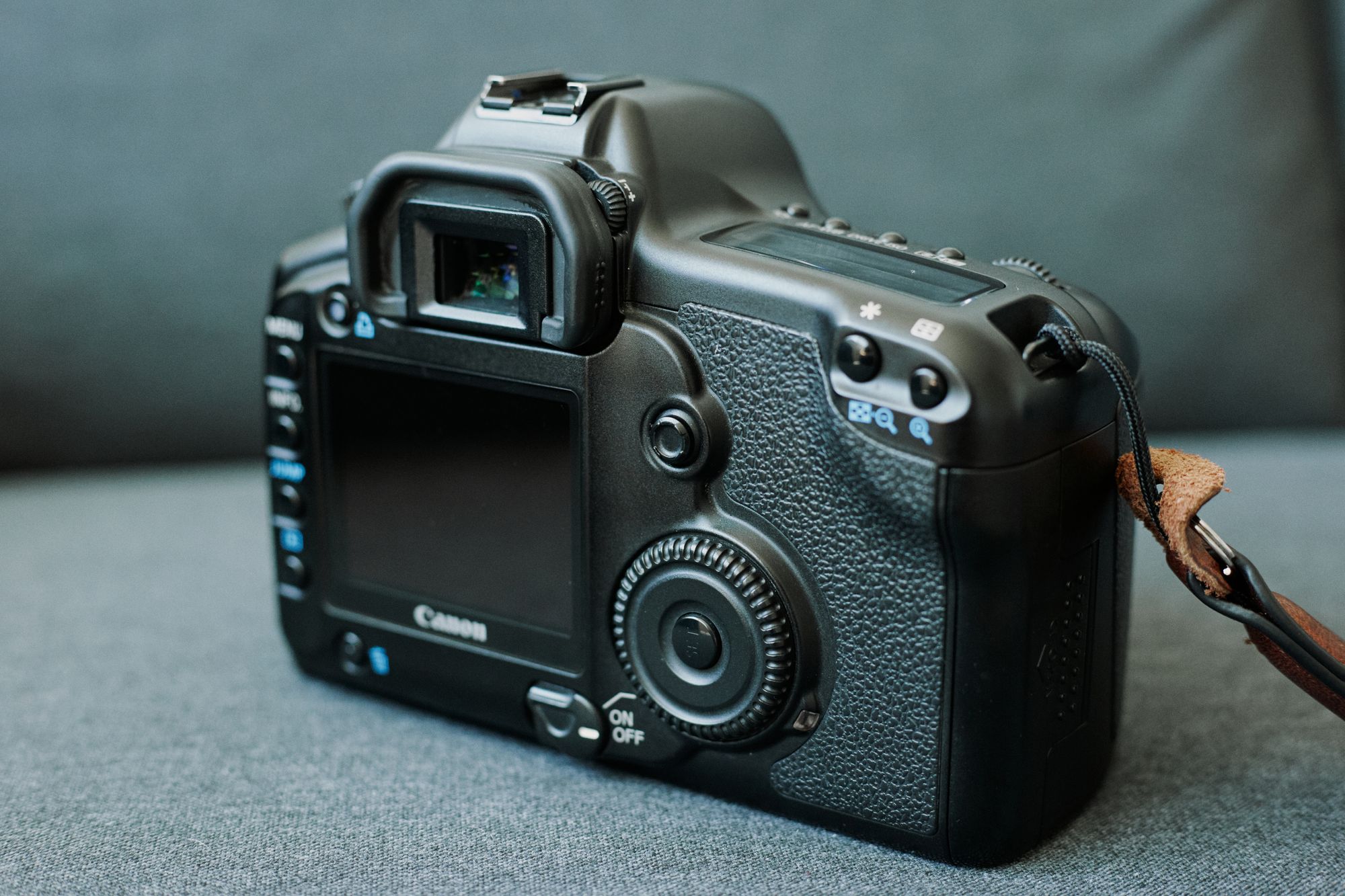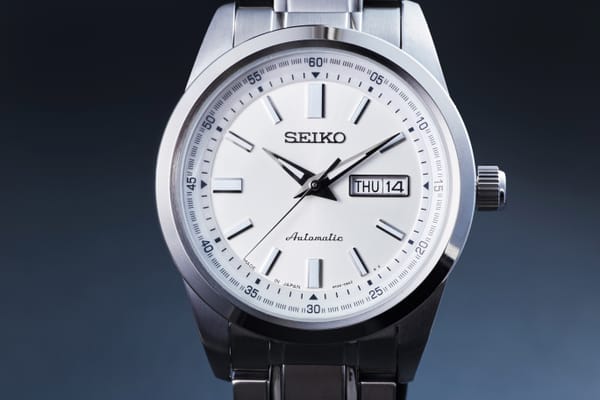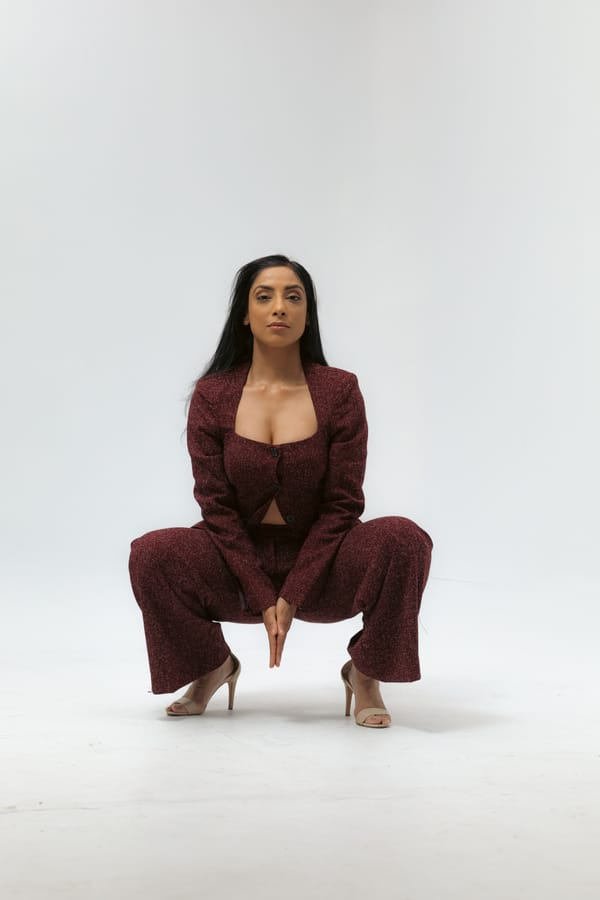A Review Of The Original Canon EOS 5D Classic
Consumers today always strive for the latest and greatest, but the Canon EOS 5D classic can now be had at a dirt cheap price, making it a tremendous value. I purchased mine recently for just over $200 USD. You're getting a professional grade camera for a fraction of what it used to cost.

Decaf Journal is reader-supported. When you buy links through our site, we may earn an affiliate commission.
The original Canon EOS 5D classic took the photography world by storm when it was released in August 2005. At a time when smaller APS-C sensors were dominant in professional cameras due to technical constraints, Canon was hugely innovative back then by putting a full frame sensor into a prosumer grade body that the masses could finally afford. Professionals everywhere were using the 5D as their image making tool of choice.
Naturally, it was my dream camera growing up and the one that I always I aspired to. I've now owned the Canon EOS 5D twice in my life. First back in 2013, and now again ten years later in 2023. I regrettably sold my first one in 2015 because I had prematurely jumped on the mirrorless camera trend, but felt serious buyers remorse less than a year later.
Being a DSLR, the Canon EOS 5D classic features an optical viewfinder which I would argue is largely a benefit rather than a disadvantage. This is especially true when shooting portraits where you have a direct visual connection with the subject, and there's no digital screen between you and the person you're photographing, unlike modern mirrorless cameras. In other words, it feels and handles more like a camera than a computer which I love.
The 5D body sports perfect ergonomics. You'd be hard pressed to find a better design for comfort and intuitive usability. Better yet, it offers a beautifully minimal layout and controls. This is an uncomplicated purist camera. It truly has everything you need, and nothing you don't. There are no extras here, and to me that's a great thing. And thankfully, if you've used a Canon camera before then you don't need to study a manual in order to know how to use it.



© Nicklaus Walter
The Canon EOS 5D classic is housed in a chunky well built body, and while it can undoubtedly take a beating, it is unfortunately not weather sealed. The joystick to control focus on the back of the body isn't quite as responsive as modern day cameras, but it is still very nice to use. The shutter sound when a photo is taken is incredibly satisfying in that it sounds like a real camera should. It definitely isn't whisper quiet though, so keep that in mind if absolute stealth is a requirement for your work.
Another lovely trait of the Canon EOS 5D is that you don't need to dive into the menus or look at the back of the camera if you don't want to while shooting. That's because there's a dedicated button or dial directly on the camera body for nearly everything you could possibly need access to.
The camera's 12.8 MP full frame sensor has great image quality at lower ISO settings that still holds up quite well today. Image quality is still acceptable up to ISO 1600, but I don't recommend using the expandable range to 3200 unless you're in an emergency as it's simply too noisy for professional work. Dynamic range especially in the highlights is quite limited when measured by modern day sensor standards.
The Canon EOS 5D classic's dynamic range is comparable to the narrow latitude of slide film which while not exactly a compliment, also isn't a tragedy for skilled users. Dynamic range isn't an issue in a studio environment, so this still makes for a good studio camera. It should also be noted that you can overcome the limited dynamic range by bracketing exposures when using a tripod and merging the files together later in post production.

I mentioned earlier that there are no extras with the Canon EOS 5D classic, and you'll notice that a few modern conveniences are missing such as no auto ISO option, no automatic sensor cleaner, there's only a single CF memory card slot and no video capture whatsoever. The rear LCD screen at 2.5 inches is small by today's standards. As a result, it can be difficult to gauge critical focus or exposure with it at times.
That said, you can always check the histogram on the LCD to confirm for correct exposure. Autofocus using the center point is surprisingly quick and very accurate. But go outside of the center point, and the 5D suffers in both speed and the ability to lock on in anything less than ideal lighting conditions.
The Canon EOS 5D is seamlessly compatible with every EF mount lens ever made, and there are millions of them available on the new and used market. Canon's EF mount has been the most dominant lens mount for decades, and the lenses are an incredible value especially when compared to the company's latest RF mount lenses for their mirrorless camera bodies.
Keep in mind that EF lenses can also be easily adapted to any mirrorless system with the use of a third party adapter such as the Sigma MC-11 for Sony E mount cameras or the Sigma MC-21 for Panasonic & Leica L mount cameras. EF mount lenses are a wise investment nowadays because they can really be used on the vast majority of new cameras being released today, including cinema cameras.




© Nicklaus Walter | Camera: Canon EOS 5D | Lens: Canon EF 50mm f/1.4 USM
The Canon EOS 5D classic's 12.8 MP sensor output is more than sufficient to cover a double page spread in a magazine when printed. This is still a very usable resolution now that the majority of photographic uses are online, and the smaller files are so much more enjoyable to transfer from the camera and store onto a hard drive almost instantly. If you need to go larger, it's trivial to upsize images with ease nowadays thanks to excellent software such as Adobe Super Resolution.
Additionally, the image quality has gotten a boost over the years as RAW image editors have improved. For example, the RAW files that I work with in Capture One look absolutely gorgeous with tastefully vivid tonality, albeit with less dynamic range than my other newer cameras. You may have read elsewhere that the Canon EOS 5D's image files have a specific aesthetic appeal, and though I can't put my finger on it, I do tend to agree.
The Canon EOS 5D classic is now my walk around camera with a SmallRig wrist strap when I want to shoot full frame lenses. It fits perfectly in the Billingham Hadley Digital with the Zeiss Milvus 50mm f/1.4 ZE lens attached. My copy of the camera is in nearly mint condition, with very minor scuffs on the bottom of the camera body and only a small amount of dust can be seen in the viewfinder.
Consumers today always strive for the latest and greatest, but the Canon EOS 5D classic can now be had at a dirt cheap price, making it a tremendous value. I purchased mine recently for just over $200 USD. You're getting a professional grade camera for a fraction of what it used to cost. Yes, the most recent smartphones will beat this in terms of dynamic range and resolution, but the files that it outputs are still very beautiful and easily hold their own today.








© Nicklaus Walter | Camera: Canon EOS 5D | Lens: Canon EF 50mm f/1.4 USM
The Canon EOS 5D is indeed a timeless classic. Am I nostalgic? Absolutely I am. But if you're the kind of photographer who likes to have a high degree control over the camera then this is for you. Would I recommend it as a primary body for paid professional photography today? No, it's simply too slow and lacks the redundancies that clients expect (dual card slots) these days. That aside, it is an excellent backup body or passionate hobbyist's primary body even.
I love mine and will never let it go again. Maybe I'm just getting older, but lately it feels good to make beautiful images with "lesser" gear. There's a certain degree of skill required, and I think you'll enjoy the challenge too.





